In many respects, it is the abundance of Secessionist architecture that has provided Timisoara with its rather appropriate moniker, “Little Vienna.” Secessionism developed in two distinct architectural phases here. Sinuous lines and floral decorations characterized the first phase which lasted until 1908. The second phase, which continued until the First World War, saw simpler, larger buildings with geometrical designs. Secessionism in Romania was an important link between the Byzantine style and later modernist architecture.
Victory Square (Piata Victoriei)
Some of the city’s most interesting sites are its elegant baroque buildings, spread around town and particularly along the main square, Piata Victoriei, which stretches from Opera Square (Piata Operei) to Loga Boulevard.
The focal point is the towering Romanian Orthodox Metropolitan Cathedral (Catedrala Ortodoxa Mitropolitana) at the south side of the square. Built between 1936 and 1946, its green and red roof tiles are arranged in a mosaic design. In front of the Cathedral is a memorial to those who lost their lives during the 1989 Revolution which overthrew Communist rule. The Memorial Museum of the 1989 Revolution (Muzeul Revolutiei) offers a full insight into the revolution in Timisoara.
Union Square (Piata Unirii)
Across the town centre is the picturesque Habsburg-era Piata Unirii, so-named for the imposing sight of the Romano-Catholic and Serbian Orthodox Cathedrals facing each other. Historic pastel-hued buildings line the square. During the 18th century, this was the city’s commercial centre and the venue for numerous military processions and religious ceremonies.
Nicolas Lenau College (Liceul Nicolas Lenau)
Located on the north side of the square, was built in 1761 and was home to the earliest theatre in Timisoara.
The baroque Serbian Orthodox Cathedral (Biserica Orthodoxa Sarba), built in 1745-48, and the mint green and white Serbian Bishop’s Residence (Vicariatul Ortodox Sarb) with its extravagant decorations are located on the west side of the square. The Cathedral can be visited daily between 7am and 6pm.
The Roman Catholic Cathedral (Catedrala Episcopala Romano-Catolica)
On the east side of the square was built between 1736 and 1754 to the design of Fisher von Erlach and represents a fine example of Viennese baroque style. The main altar painting was completed by Michael Angelo Unterberger, director of the Fine Arts Academy in Vienna.
The impressive 18th century Baroque Palace (Palatul Vechii Prefecturi) dominates the square’s south side. Formerly the governor’s residence, it now houses the Museum of Fine Arts with works by German, Flemish and Italian artists.
At the northwest corner of Piata Unirii stands the spectacular Scont Bank (Banca de Scont). This typical Hungarian-style art nouveau structure, built in the early 20th century, features an organic shape comprising curved walls studded with turquoise tiles forming patterns drawn from folklore, and extravagant iron gutters and window grills.
From Piata Unirii, walk east along Str. Palanca to the oldest building in Timisoara, now housing the Banat Etnographic Museum within the city’s remaining 18th century bastion.
Freedom Square (Piata Libertatii) to Victory Square (Piata Victoriei)
Another remarkable open space in the city is Piata Libertatii which offers a great display of Secessionist architecture. The Banat region was under Turkish rule from 1552 until 1716 when the Austrian-Habsburg Prince Eugene de Savoy took over Timisoara. At this time, a seven-star- shaped bastion and gate-towers were constructed and the marshes surrounding the town were drained by the new Habsburg governor, General Mercy.
Continue along Str. Lucian Blaga to the 14th century Huniade Castle (Castelul Huniade). Built during the rule of Carol Robert, Prince de Anjou, it was completed by Iancu of Hundeoara and redesigned by the Habsburgs in the 18th century.
Residential areas
South and east of the Bega Canal are the Josefin, Elisabetin and Fabric residential districts, true gems of Jugendstil, or art nouveau, architecture, built mainly in the late 19th century. The small residential square of Piata Plevnei, south of the Bega Canal, is bordered by excellent examples of the first phase of Secessionist architecture, such as Gemeinhardt’s Peacock House (Casa cu Pauni) built in 1905. Facades are covered with an abundance of typical motifs: peacocks, swans, owls and squirrels together with sinuous vines and foliage. The theme continues on the buildings lining Splaiul Tudor Vladimirescu, following the south bank of the Bega, and to a lesser extent, around nearby Piata Maria and Bulevardul 16 Decembrie 1989.
Secessionist, or Art Nouveau architecture also can be found in the cities of Arad (especially on Strada Closca and Piata Avram Iancu), Oradea (Vulturul Negru and Astoria hotels), Cluj (Odon Lechner National Theatre), Satu Mareand Targu Mures (Palace of Culture).
Jewish Timisoara
Even though Jewish presence in the Banat region dates back to the 2nd century AD, the first written mention of the Jewish community in Timisoara occurred in 1716, when the Turkish army commander surrendered the town to the Austrian Prince Eugeniu of Savoia.
In the old Sephardic cemetery, graves dating to the Turkish occupation may be seen, the oldest belonging to Azriel Assael, a Rabbi and surgeon who died in 1636. A century latter, Rabbi Meir Amigo and four followers from Istanbul were allowed to settle in the city. Following the implementation of citizen rights acts in the Austro-Hungarian Empire, Timisoara’s Jewish community flourished, reaching a population of almost 7,000. Six synagogues were built in the city after 1867, the year of the Austro-Hungarian reconciliation. Today, three remain with one still active.
The New Synagogue in Fabric (Sinagoga din Fabric)
Address: Str. Splaiul Coloniei 2
One of the most beautiful buildings in Timisoara, the synagogue in the Fabric district was built in 1899 by Hungarian architect Lipot Baumhorn in a traditional Moorish style. It is currently closed for structural repairs.
Great Synagogue(Sinagoga Cetate)
Address: Str: Resita 55
This Neolog-rite synagogue, built in Oriental style in 1865, resembles the great synagogue in Oran, Algeria. One of the largest synagogues in Europe, it is currently closed for structural repairs.
Orthodox Synagogue
Address: Iosefin district
Built between 1906 and 1910, this Orthodox Synagogue is the only one in service at this moment.
Museums
Banat Museum (Muzeul Banatului) – Closed for renovation
Address: Piata Huniade 1
Tel: 0256 491.339
Email: muzeul.banatului@yahoo.com
Open: Tue. – Sun. 10:00 am – 4:00 pm; Closed Mon.
Admission charge
Occupying a 14th century castle, this museum boasts sizeable historical and natural history sections.
Banat Museum, Ethnographic Section (Muzeul Banatului, Sectia de Etnografie)
Address: Str. Popa Sapca 4
Tel: 0256 491.339
Email: muzeul.banatului@yahoo.com
Open: Tue. – Sun. 10:00 am – 4:00 pm; Closed Mon.
Admission charge
Exhibits of textiles, folk costumes, and glass-painted icons are on display.
Memorial Museum of the 1989 Revolution (Muzeul Revolutiei)
Address: Str. Emanuil Ungureanu 8 (behind Piata Unirii)
Tel: 0256 294.936
Email: amrtim@lasting.ro
Open: Mon. – Sun. 9:00am – 5:00pm
Free admission
The Memorial Museum exhibits uniforms of Romanian militia and military, written testimonies of witnesses and participants in the Revolution, and personal documents, an audio-visual archive, a library and a collection of newspapers. A video charting the rise and fall of Nicolae and Elena Ceausescu may be shown on request.
Timisoara Art Museum (Muzeul de Arta)
Address: Str. Mercy 2
Tel: 0256 491.339
www.muzeuldeartatm.ro
Open: Tue. – Sun. 10:00am – 6:00pm; Closed Mon.
Admission charge
The collection includes works of 15th – 17th century Italian masters and prints by important European artists.
Banat Village Museum (Muzeul Satului Banatean)
Address: Aleea CFR 1
Tel: 0256 225.588
Email: office@msbtm.ro
www.msbtm.ro
Open: Tue. – Sat. 10:00 a.m. – 6:00 p.m.; Sun. 12:00 p.m. – 8:00 p.m.; Closed Mon.
Admission charge
This open-air museum, located three miles from the city centre, exhibits more than 30 traditional peasant houses dating from the 19th century. Wood, stone and clay homes were taken piece by piece and set up in the beautiful surroundings of Padurea Verde (Green Forest). Craftsmen’s fairs and folk shows are held here periodically.
Serbian Bishops’ Collection (Muzeul Diocezei Ortodoxe Sarbesti)
Address: Piata Unirii 4
Tel: 0256 430.426
Open: Mon. – Sun. 7:30am – 3:30pm
Admission charge
The collection includes portraits and outstanding 18th century icons.
Nearby Attractions
Recas Vineyards
Where: 12 miles east of Timisoara
Access: car, bus, train
http://www.recaswine.ro/?r=na
Taste white, red and rosé wines, such as Cabernet Sauvignon, Burgund Mare, Merlot, Cadarca, Feteasca Regala or Creata at Recas Wine Cellars (Cramele Recas). A visit at the cellars will give you the opportunity to attend a presentation of the wine making process in the Barrique Hall, and the conservation of bottled wines in the Recas vinoteque – featuring stocks of exceptional vintages.
Performing Arts
Symphonic Music
Banat Philharmonic (Filarmonica de Stat Banatul)
Address: Blvd. C.D. Loga 2
Tel. 0256 495.012
Email: filarmonicatm@yahoo.com
www.filarmonicabanatul.ro
Opera & Ballet
Romanian Opera House (Opera Nationala Romana Timisoara)
Address: Str. Marasesti 2
Tel: 0256 201.286
Email: ort@artelecom.net
http://www.ort.ro
The construction of the Romanian Opera House, began in 1871 and ended four years later, in 1875. The design was that of Viennese architects, Helmer and Fellner, the authors of numerous concert halls in Budapest , Vienna and Odessa . The murals in the concert hall are inspired by history and popular Romanian fairytales. Opera in Timisoara was appreciated as far back as the end of the 18th century. Joseph Strauss started out as Musical Director at Timisoara , where he composed and presented the world premiere of Faust’s Life and Deeds. Franz Liszt also performed in Timisoara in 1846.
Theatre
National Theatre (Teatrul National)
Address: Str. Marasesti
Tel: 0256 201.288
German State Theatre(Teatrul German de Stat)
Address: Str. Marasesti 2
Tel: 0256 201.291
Hungarian State Theatre (Teatrul Maghiar de Stat Csiky Gergely)
Address: Str. Alba Iulia 2
Tel: 0256 134.814
Puppet Theatre (Teatrul pentru copii si tineret Merlin)
Address: Blvd. Tineretii 3
Tel: 0256 193.049
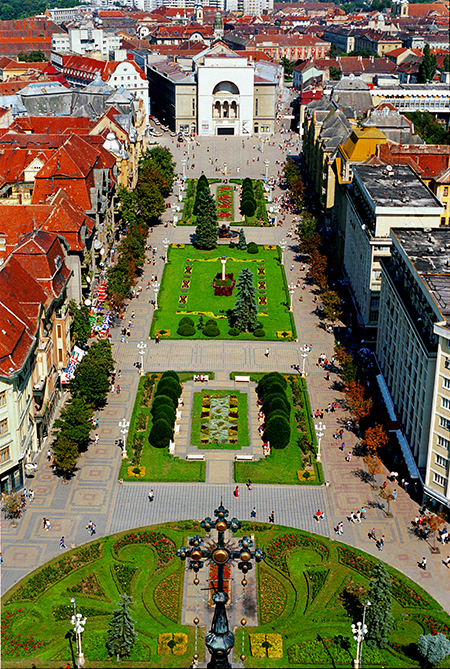
Victoria Square 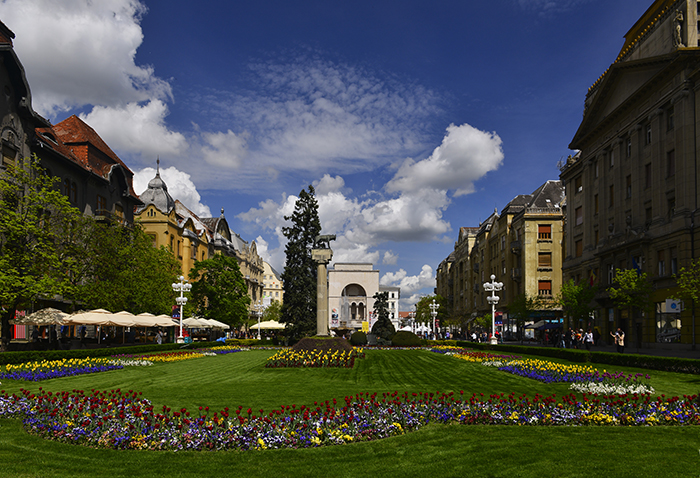
“Lupa Capitolina” Statue 
Heroes Monument 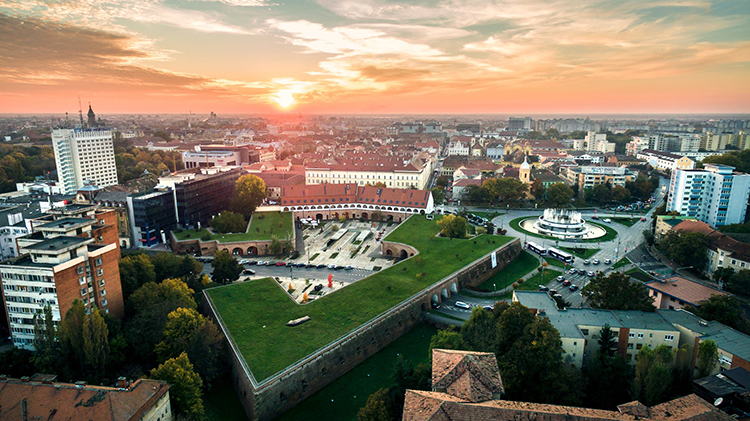
Theresia Bastion 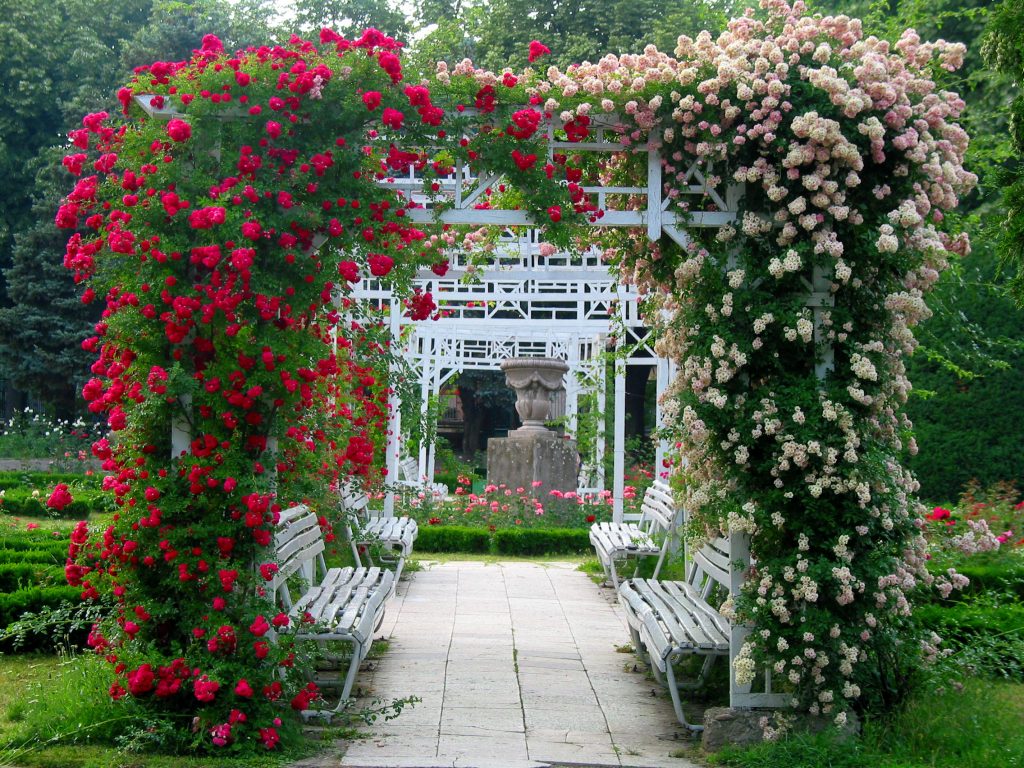
Roses park 
Romano Catholic Cathedral 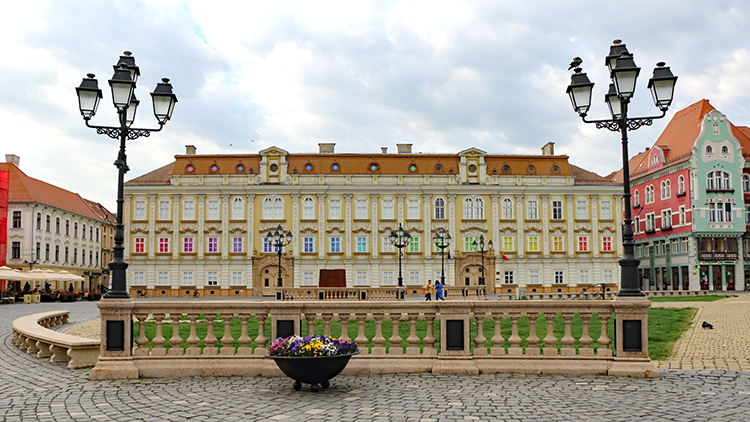
Art museum 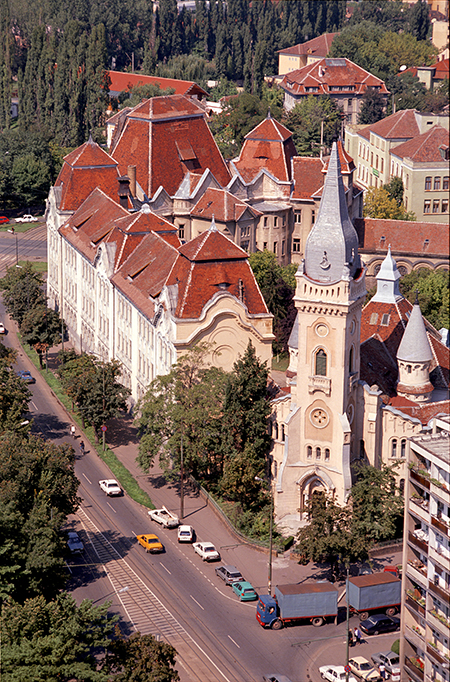
Piarist College 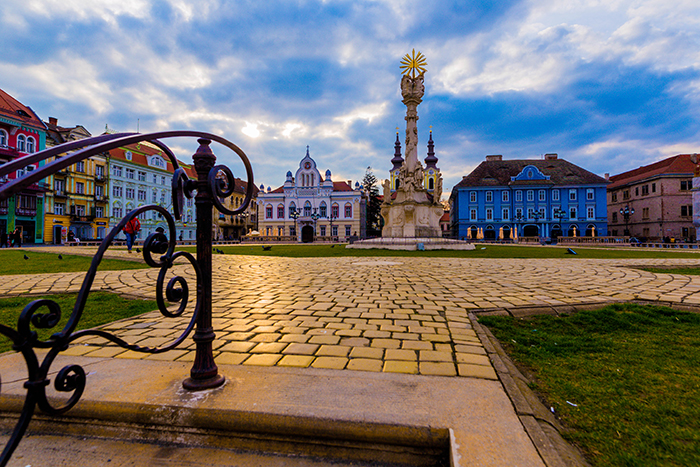
The Monument of Holy Trinity 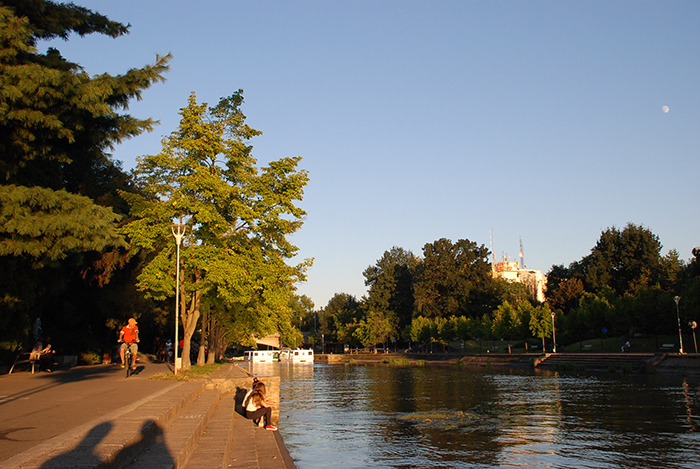
Bega River 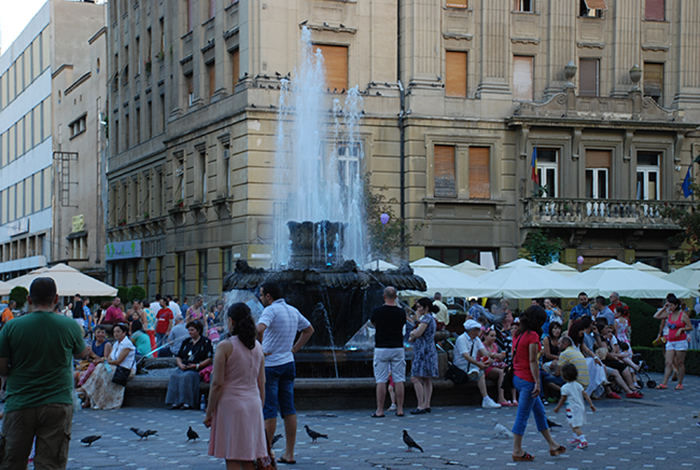
Fontain from Victory Street 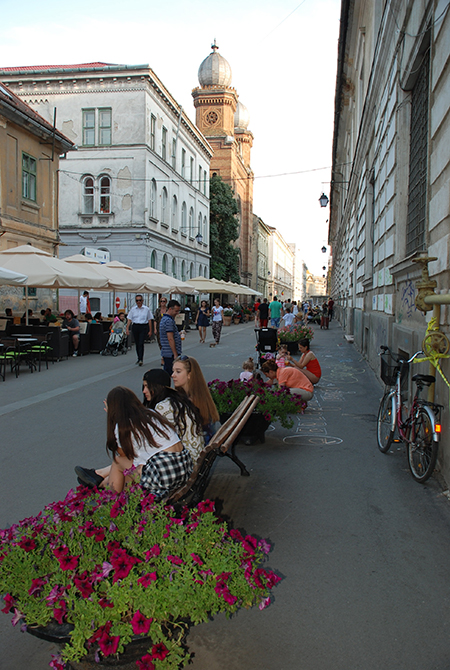
Mărăști Street
